TCL TVs are an unbeatable choice for all budget buyers. Although they might not be packed with advanced features like some more expensive brand models, they generally offer excellent picture quality properties and plenty of convenient features. In this TCL 4 Series vs 5 Series post, we’ll compare these two mid-range lineups to determine which offers better value for the money and help you decide which is the more suitable choice for you.
TCL 4 Series vs 5 Series – Quick Comparison
TCL 4 Series
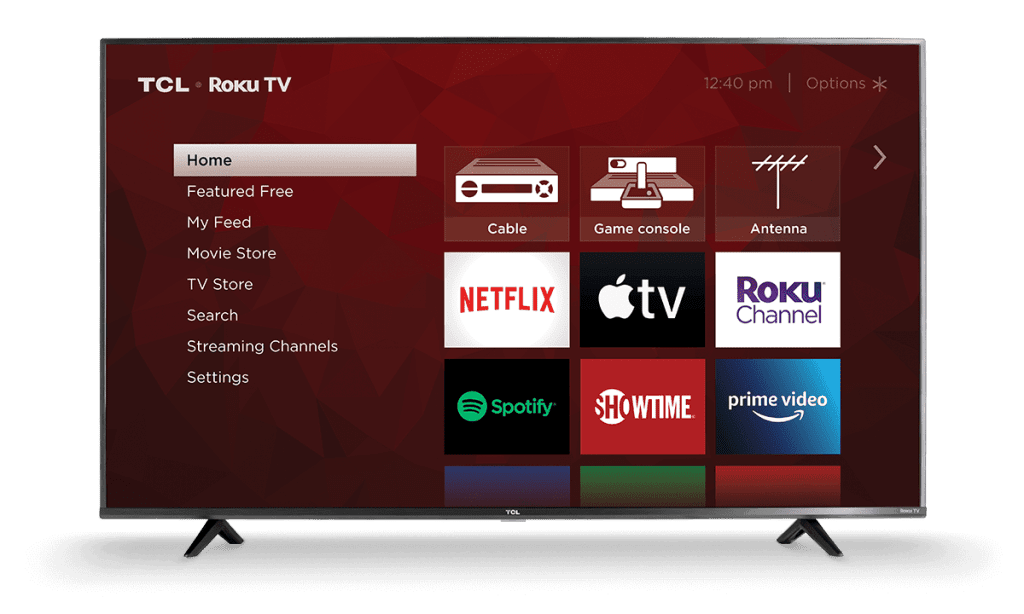
An okay choice for most general purposes, the 4 Series is the go-to choice of many buyers looking for a 4K TV that doesn’t break the bank. Here’s a closer look at the most significant pros and cons of 4 Series TVs:
Pros:
- Great contrast ratio
- Decent reflection handling for the price
- Excellent response times and low input lag
- Very capable of upscaling lower-resolution content
Cons:
- No local dimming feature
- Poor viewing angles
TCL 5 Series
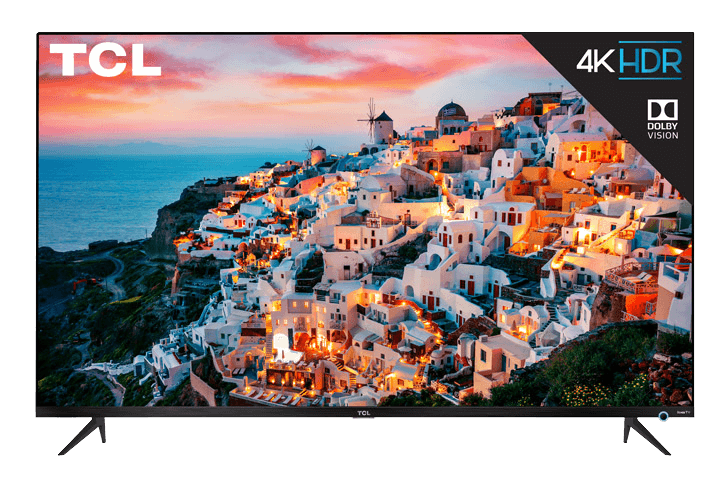
A very affordable TV lineup on its own, the 5 Series is the more expensive option in this TCL 4 Series vs 5 Series comparison. It comes with a few more advanced gaming and performance features that put it a notch above the 4 Series. Let’s go over the most notable advantages and drawbacks of the 5 Series:
Pros:
- Dolby Vision and Dolby Atmos
- Impressive contrast ratio
- Includes models with built-in Roku
- Premium design at an affordable price
Cons:
- Poor viewing angles
- Can’t get very bright
TCL 4 Series
Price
TCL 4 Series TVs are among the most competitively-priced 4K TVs and are an excellent choice for all entry-level buyers with a tight budget. Looking through the lens of this TCL 4 Series vs 5 Series article, the former series is a bit barebone compared to the latter one. In this regard, you should primarily opt for a TCL 4 Series TV if you want an inexpensive 4K TV and don’t mind missing out on some features.
Panel Technology
TCL 4 Series TVs come with standard LED VA panel technology. When viewed from the front, these panels maintain great picture quality and contrast ratio but quickly lose their performance properties when viewed from the side. These characteristics mark all 4 Series models.
Image Processor
TCL 4 Series models include a good dual-core processor that handles all image processing tasks. And, while this might not be a custom TCL-made processor that 5 Series and 6 Series buyers can expect, it still does a great job at upscaling and processing images. Of course, since it’s a standard CPU, it comes without any AI-enhanced or advanced processing capabilities.
Motion Technology
4 Series TVs have a mediocre response time, as they need around 18 milliseconds to fully transition between scenes. Moreover, they flicker at a frequency of 120 Hz, which sometimes results in distinct backlight flickering.
Given this, motion often looks blurry, especially in dark transitions. This can cause black smearing and noticeable problems in fast-moving content. With all of this in mind, 4 Series TVs are a poor choice for sports, gaming, and most fast-paced content in general.
Picture Quality
Contrast Ratio / Black Level
The 4 Series offers an impressive native contrast ratio, which is expected from a VA LED panel. These models can display deep blacks and provide exceptional images when viewing the content in a dark environment. Having said that, as 4 Series models don’t have a local dimming option, you can’t improve the native contrast ratio as you can do with 5 Series models.
Local Dimming
The TCL 4 Series doesn’t have a local dimming feature, meaning that these TVs can’t control the LEDs behind the screen to adjust the picture according to the viewing environment. Additionally, 4 Series models come with direct backlight lighting, which isn’t as good as the full-array lighting on 5 Series TVs.
Peak Brightness
4 Series TVs offer poor SDR peak brightness performance. They can’t get bright enough to combat glare in well-lit rooms and are ideally suited for moderately lit environments at best. While this is inconvenient, at least the brightness is remarkably consistent across different types of content.
The performance isn’t any better when it comes to HDR peak brightness. They can’t get much brighter than they do in SDR. The peak 2% HDR brightness window is around 150 nits, four times less than the desired peak luminosity for 4K TVs.
Color
4 Series models have decent color gamuts but don’t support a wide color gamut necessary for a true HDR experience. They offer solid coverage of the commonly-used DCI P3 color space and slightly below average coverage of the wider Rec 2020 range. Additionally, these TVs have a disappointing color volume. This is understandable, as they don’t support a wide color gamut and are limited to relatively low peak brightness.
Viewing Angle
Not surprising for basic LED VA panels, 4 Series TVs have poor viewing angles, even in this TLC 4 Series vs 5 Series comparison. Brightness loss starts appearing at less than thirty degrees, while gamma shifts and washed-out black shades start at viewing angles of just about ten degrees.
Reflections / Anti-glare
4 Series models generally have decent reflection handling properties. They reflect between five and six percent of the light that hits their surface. TVs from this lineup have a semi-gloss screen finish, meaning that they handle ambient light fairly well but struggle with direct reflections or rooms with a lot of glare.
Sound Quality
The sound quality on most 4 Series TVs is underwhelming. The TVs can get loud, and there’s not much compression at higher volume levels, but the frequency response simply isn’t finely tuned. That said, 4 Series models have surprisingly better distortion performance than their 5 Series counterparts.
Smart TV Platform (Operating System)
Most 4 Series TVs feature the Roku TV operating system, although you can also get some variants with Google TV OS instead. Focusing on the Roku TV platform, it’s fast, easy to use, and generally very smooth. It offers a great selection of apps and supports HDR content on both YouTube and Netflix.
Connectivity
Inputs
Even though the 4 Series doesn’t include many advanced features, it offers excellent input connectivity properties. Most models support 4 HDMI ports and at least one USB port, along with an Ethernet port. 4 Series models also offer low lag, especially when you enable the Game Mode feature.
Voice Assistants
4 Series TVs come with the same basic remote as the 3 Series models. They don’t have a built-in mic, so the only way to access the voice assistant is through the Roku app on your mobile device. This voice assistant is relatively primitive and doesn’t provide you with many voice control options.
Wireless Technologies
Standard to all newer TV models, TVs from the 4 Series line have Wi-Fi support in 2.4GHz and 5.0GHz Wi-Fi. Unfortunately, there currently aren’t any TCL 4 Series TV sets that support Bluetooth technology.
Gaming Enhancements
As we’ve highlighted throughout this post, the TCL 4 Series covers basic and affordable 4K TVs. With that in mind, you shouldn’t expect any advanced gaming enhancements like VRR, G-Sync, or FreeSync with any model from this lineup.
Recommended TCL 4 Series TVs
TCL 4 Series S434 Android 2020
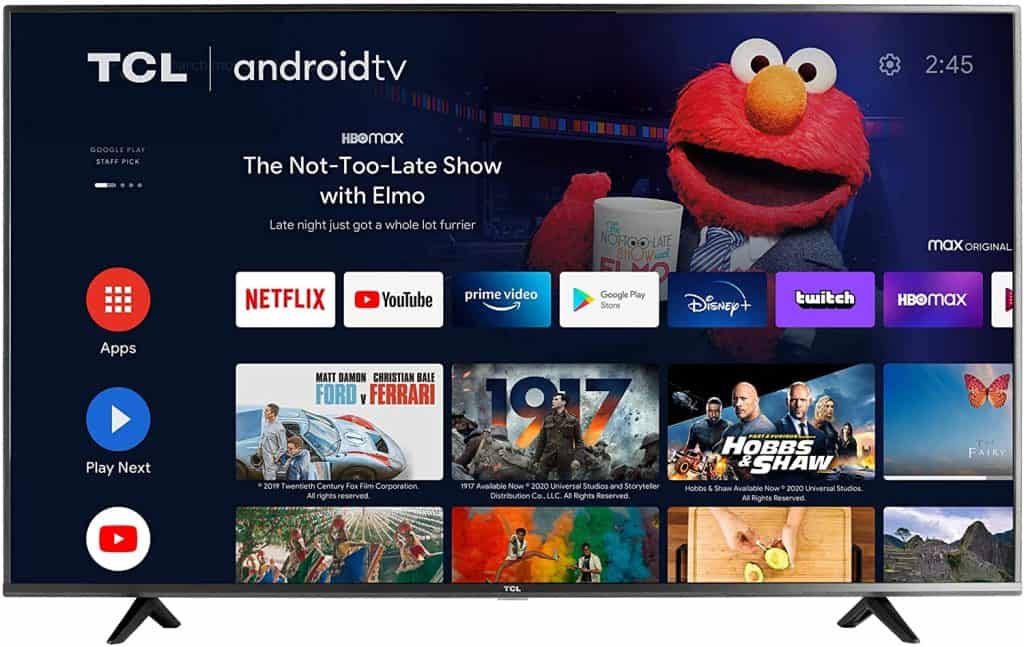
While the 2020 4 Series S434 model won’t win any performance awards, it does what it advertises perfectly. It serves as an excellent all-around TV for all entertainment purposes. This model delivers solid reflection handling and an amazing contrast ratio, even though it cannot get very bright. It shows its full potential when viewing the content in a dark room when it doesn’t have to combat excessive glare.
TCL 4 Series 2020
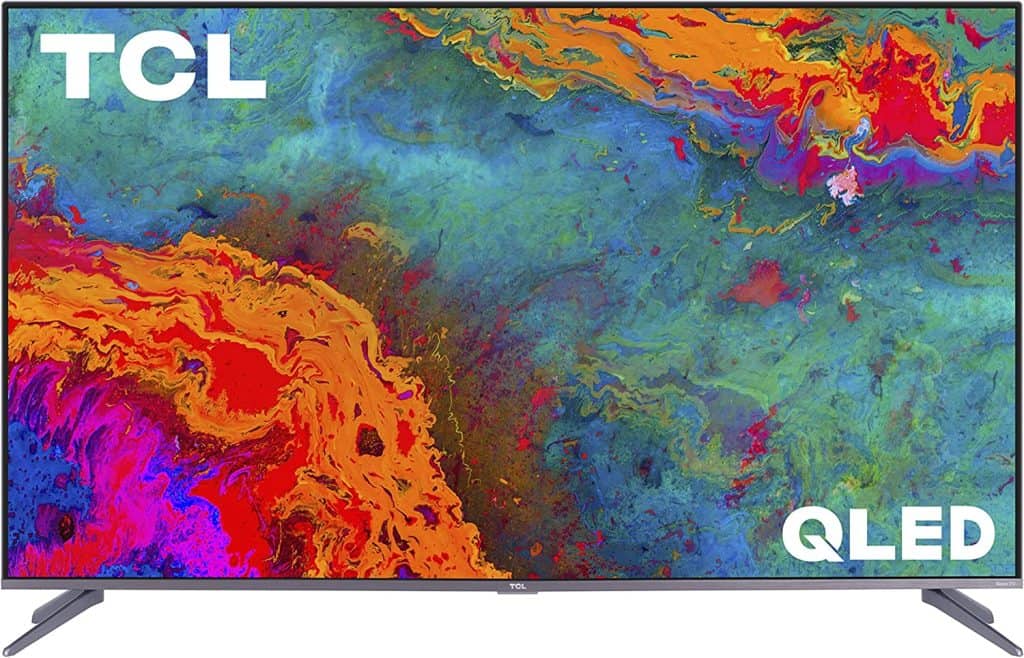
As far as mixed-usage budget TVs go, the 4 Series 2020 model is hard to beat. It delivers consistent performance for viewing movies, TV shows, and sports. This model can upscale lower-resolution content reasonably well and provides a fantastic native contrast ratio. And, while it can’t get very bright, it excels in dark and moderately lit viewing environments. Lastly, it perhaps serves best as a PC monitor, as it has decent reflection handling and low input lag.
TCL 5 Series
Price
Given their slightly better features, TCL 5 Series models have a higher price tag than the 4 Series TVs. Nevertheless, they are more affordable than what many other brands are offering. In the context of this TCL 4 Series vs 5 Series comparison, the latter lineup is a better choice if you’re looking for more powerful features and are prepared to spend more money on it.
Panel Technology
Most TCL 5 Series models use classic LED VA panels. These panels maintain good viewing accuracy at wider viewing angles. However, they generally offer slightly worse performance features compared to more modern panel designs.
In addition to the traditional LED panels, TCL has also introduced 2020 5 Series models with QLED panels and continued into 2021 in the same style. These panels still have many LED properties but offer better brightness and enhanced color properties.
Image Processor
TCL 5 Series models come with an AiPQ Engine processor. While it packs more processing power than the image processor in the 4 Series TVs, it’s still not nearly as fast or capable as image processors that come with other modern TVs from other manufacturers. You can count on some image upscaling properties, but not to any overly impressive extent.
Motion Technology
TCL 5 Series TVs offer noticeably better response times than their 4 Series counterparts. Although they can be slightly slower with darker transitions, they deliver images with little to no overshoot. 5 Series models have a response time of around 12 milliseconds, making most types of fast-moving content look smooth. 5 Series TVs also have a very high flicker frequency so you won’t notice any annoying flickering.
Picture Quality
Contrast Ratio / Black Level
While 4 Series TVs deliver an exceptional contrast ratio, 5 Series models manage to outperform them in this category. This is partly due to the higher native contrast and the fact that 5 Series models come with full-array local dimming that allows you to improve the contrast ratio.
Local Dimming
The 5 Series comes with a local dimming feature, which performs reasonably well. It helps make the screen more uniform but also causes grayish displays at times. This trait also handles subtitles reasonably well. There’s less blooming than the 6 Series QLED model. 5 Series models produce better dark scenes in dark environments than 4 Series TVs, as small light sources pop well and there’s no black crush.
Peak Brightness
Most TCL 5 Series TVs offer mediocre SDR brightness but significantly better peak values in this category than the 4 Series sets. Unfortunately, 5 Series TVs can’t get bright enough to combat glare in most situations. That said, it’s worth mentioning that the 5 Series 2021 QLED model significantly improves on this and delivers much better SDR peak brightness than previous models.
When it comes to HDR peak brightness, most 5 Series models fail to deliver a decent performance as they can get only slightly brighter than 4 Series TVs. Moreover, a bigger problem 5 Series models face is that they can’t maintain consistent brightness with different content.
Color
The 5 Series outperforms the 4 Series in both color gamut and color volume properties. Unlike the 4 Series, TVs from this lineup support wide color gamuts, meaning that they deliver more immersive HDR content. They also provide better coverage of both the DCI P3 color space and the wider Rec 2020 color space.
5 Series TVs can comfortably display deep and saturated colors thanks to their richer color volume and exceptional contrast. However, they struggle to display brighter blues, which is a typical trait of most LCD TVs.
Viewing Angle
The TCL 5 Series offers slightly better viewing angles, although this difference measures a couple of degrees at most. In other words, you can still expect to quickly lose image accuracy when you move even a little bit off-center. Considering this, 5 Series models aren’t a good choice if you’re looking for a TV for a wide seating arrangement.
Reflections / Anti-glare
5 Series TVs have very similar reflection handling properties to the 4 Series models, as they also come with a semi-gloss screen finish. They reflect around six percent of total light in all directions and perform well in moderately lit rooms but struggle in brighter rooms or when placed opposite a window.
Sound Quality
5 Series TVs come with slightly better built-in speakers than 4 Series models. Although they can’t produce much bass, these speakers have a well-balanced sound profile and can get reasonably loud. Additionally, TLC 5 Series models come with the Dolby Atmos feature.
Smart TV Platform (Operating System)
Like 4 Series models, most 5 Series TVs include the Roku TV operating system. As we’ve noted above, this is a very streamlined and user-friendly Smart TV platform. You can also find 5 Series models with Google TV, which should be your preferred option if you’re looking for strong voice assistant properties.
Connectivity
Inputs
Most TVs from the 5 Series lineup come with four HDMI ports, at least one USB port, and an Ethernet port, among other features. This enables convenient and user-friendly connectivity properties. One more thing worth noting is that the 5 Series offers exceptionally low input lag, even better than many 6 Series models.
Voice Assistants
5 Series with built-in Roku TV use the same remote as 4 Series and 3 Series models, with identical voice control properties. Models that utilize Google TV employ the Android TV remote app, which allows you to use the Google Assistant voice control feature. This assistant offers you many voice control options and is much better than the assistant available on Roku TV 5 Series models.
Wireless Technologies
Like all 4 Series models, TVs from the 5 Series line come with Wi-Fi support in 2.4GHz and 5.0GHz Wi-Fi. Likewise, they also don’t support Bluetooth, meaning that you can’t pair them up with a soundbar, speakers, or headphones through this technology.
Gaming Enhancements
Most 5 Series models don’t have any gaming enhancements. That said, you can find TVs from this series that come with some extra gaming features. For example, the 2021 QLED model supports VRR and FreeSync. This enables it to synchronize its refresh rate with the input device’s output and minimize stuttering and screen tearing issues.
Recommended TCL 5 Series TVs
TCL 5 Series S535 2020 QLED
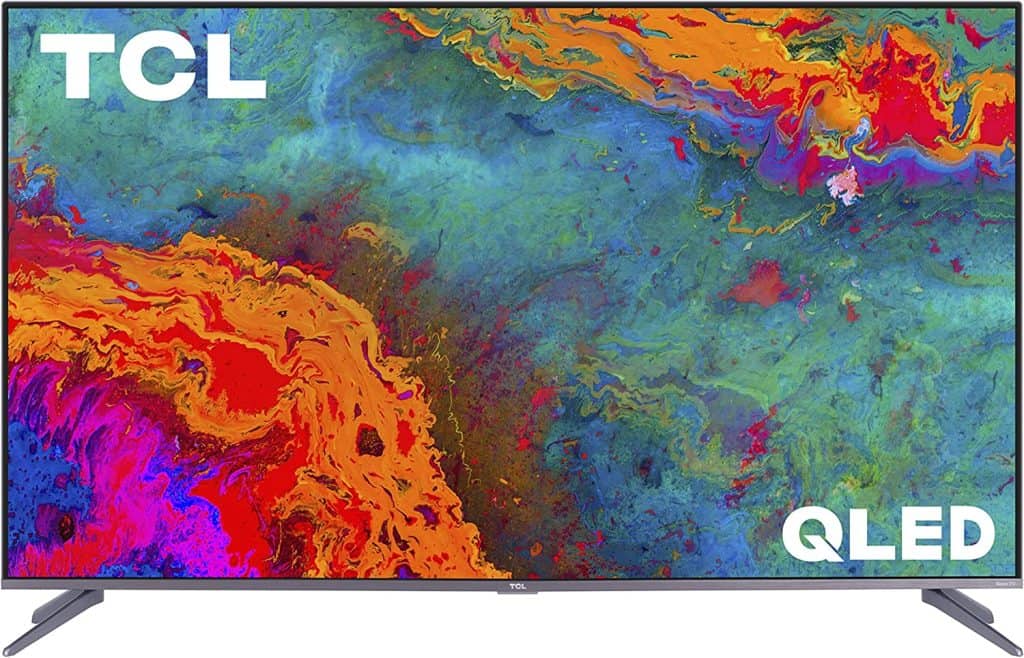
The perfect mid-range 4K TV for budget buyers, the 2020 5 Series S535 QLED model delivers superb value for money. It can display a wide color gamut necessary for HDR content, although it can’t get bright enough to deliver an actual HDR experience like some more expensive TCL models.
This TV has an outstanding contrast ratio, solid local dimming feature, and speedy input response times with minimal lag. These characteristics make the S535 a terrific choice for movies and video games.
TCL 5 Series S546 2021 QLED
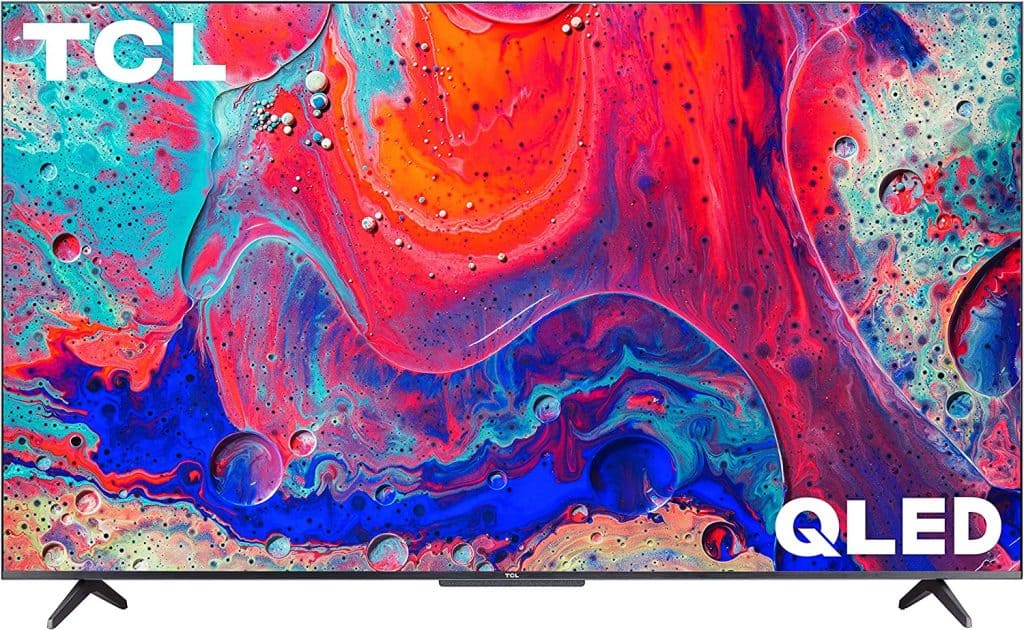
The 2021 5 Series QLED is an impressive TV for most uses. It improves on the SDR and HDR brightness issues and excellently displays a wide range of supported resolutions.
It boasts a VA panel with a high contrast ratio and wide color gamuts. Reflection handling and the viewing angles are okay, although not as good as with some 6 Series models. Lastly, this model is also great for gaming, as it supports VRR and delivers excellent response times with low input lag.
Conclusion
There’s not much discussion on which TV is the stronger performer in this TCL 4 Series vs 5 Series comparison. This is because the 5 Series outperforms the 4 Series in pretty much every category. It can get brighter, offers a better contrast ratio with a local dimming feature, and includes a handful of advanced features and gaming enhancements.
On the other hand, 4 Series models are the more affordable choice across all featured display sizes. Moreover, many 4 Series models offer better reflection handling out-of-the-box. Lastly, you can also pick from a wider range of display sizes if you decide to go with a model from this series.